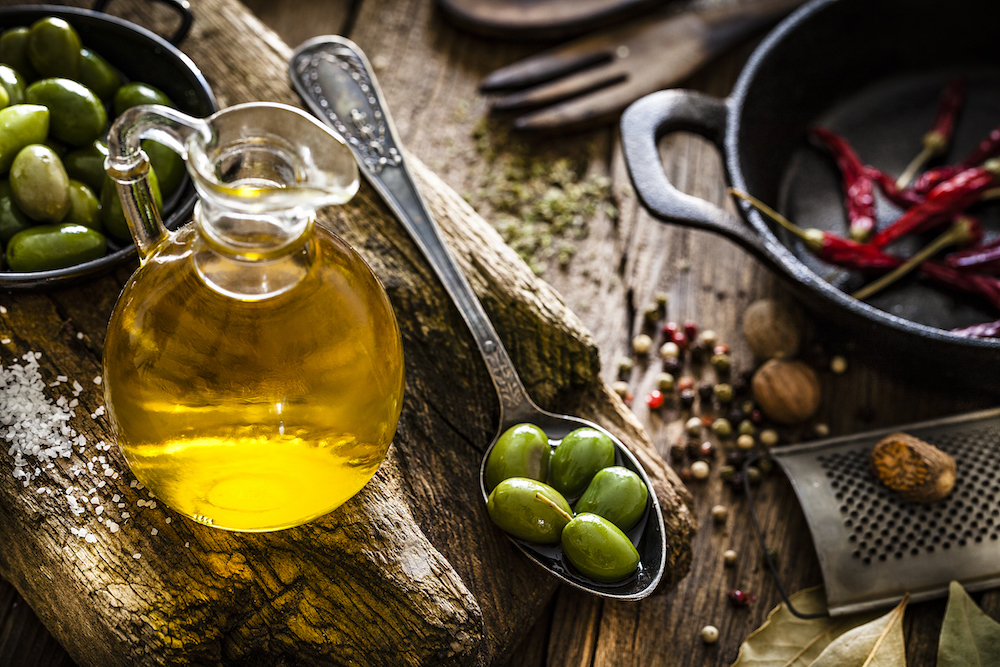Olive oil has long been a staple in Italian cooking, but it’s also poorly understood—or even misunderstood—by many. With that in mind, this introduction to olive oils should answer at least some of your questions.
Four general grades of olive oil are available for foodservice establishments, and each is geared toward specific uses that bring out the best qualities in foods. Olive oil is the only cooking oil that offers a variety of natural flavors, from robust and full-flavored to delicate and buttery, from fruity to earthy to peppery to nutty.
Use the below descriptions as your guide to understanding the fragrances, colors and flavor profiles of the different grades of olive oil.
Made from full-flavored ripe olives pressed immediately after harvest, extra-virgin olive oil (EVOO) boasts a robust, fruity flavor and can range in color from golden to green. It has the most full-bodied taste and aroma of the olive oil varieties. EVOO is a great choice for salads and vegetable dishes; for basting meats and seafood; and for seasoning soups, marinades and sauces. EVOO makes a great table addition. Pour a full-flavored olive oil into a dish for dipping hearty breads, or place in a decorative bottle on the table for customers to pour over salads, pizza and other Italian dishes.
Olive oil, sometimes described as “pure,” is an excellent all-purpose cooking oil and tends to be more golden in color. It has a mild flavor with just a hint of fruitiness. Olive oils in this category can be used for all types of cooking, from sautéing and stir-frying to basting grilled or oven-roasted meats, poultry and seafood. Olive oil also serves as a flavor enhancer for sauces, marinades and dressings.
Produced from the final pressing of the original olive skin and pits, olive pomace oil is a lower-cost alternative to extra-virgin or olive oil. It works well for general cooking and is also great for high-heat frying applications.
Extra-light olive oil, with its light golden color, has the mildest flavor among olive oils, with just a hint of olive flavor, making it an ideal choice for all types of cooking, especially baking. It can be used to replace vegetable oil in most recipes. Extra-light olive oil is also the best choice for high-heat cooking methods, since it remains extremely stable and will not burn at high temperatures.















